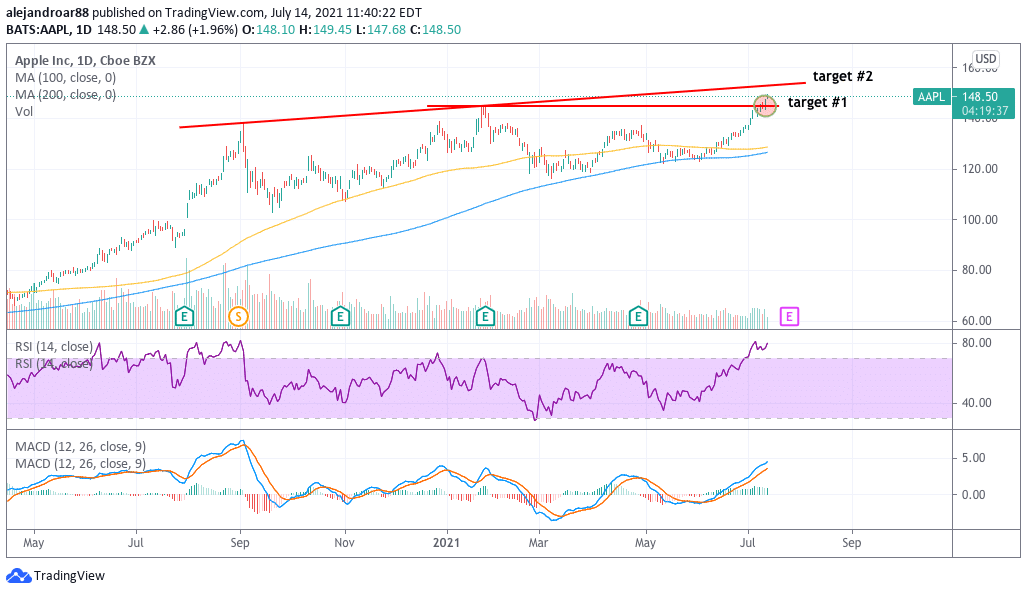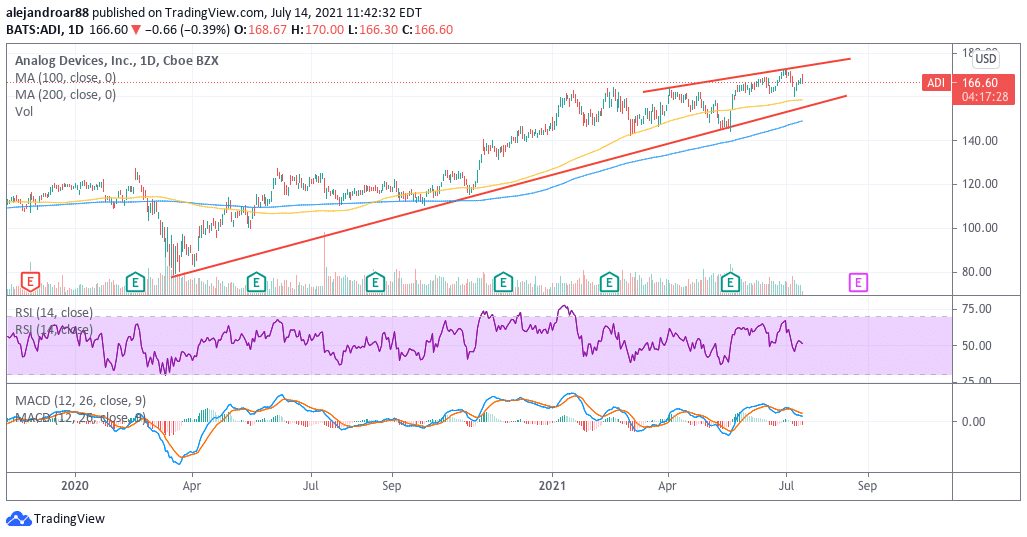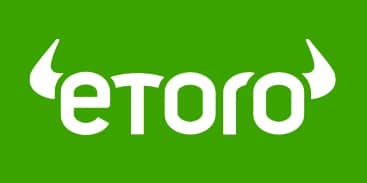5 Best 5G Stocks to Buy in July 2021
Please note that we are not authorised to provide any investment advice. The content on this page is for information purposes only.
The 5G technology is taking over the telecom industry, promising to ramp up broadband speeds to a point that users will be able to download and interact with content that was previously unavailable in the past such as AI-powered augmented reality (AR) and other similar advancements.
With 5G networks already being progressively rolled out across the world by top telecom giants, it is still fairly early to enter this promising investment theme by selecting the most promising players in the landscape.
For that purpose, here is a list of five names that stand out as they are either leaders of their respective markets or their current valuation or dividend is attractive enough to justify using them as vehicles for getting exposure to the up-and-coming 5G market.
1. Apple (AAPL)

Apple is the undisputed leader of the smartphone market by revenue, with the company now being valued at $2.4 trillion amid its incredible track record of disrupting the status quo by introducing innovative products and solutions that are usually one step forward of what consumers are looking for.
By the end of last year, Apple managed to grow its revenues by 5% at $274.5 billion while its net income stood at $57.4 billion. Impressively, the company has achieved this tremendous growth while maintaining its debt in check, with long-term debt currently standing at $121 billion on total assets of $337 billion including $69.8 billion in cash.
Gross margins for the firm have shown a remarkable improvement during the first quarter of 2021, moving from 39.8% to 42.5% while net margins have stood above 20% for multiple years.
Although the firm’s earnings growth has been fairly stalled lately, the introduction of 5G phones and the world of possibilities that this high-speed broadband opens up for Apple is tremendous and this makes the firm current 28 forward P/E ratio a bit conservative based on the growing number of opportunities that should emerge once this technology is fully rolled out.
67% of all retail investor accounts lose money when trading CFDs with this provider.
2. Qualcomm (QCOM)
Qualcomm is all-hands-of-deck when it comes to developing top-of-the-line 5G products including integrated circuits, software, and other technologies that will power 5G devices in the coming future. The company’s portfolio of 5G-related products includes RFFE components and a proprietary modem-to-antenna device called the Snapdragon 5G modem RF system.
In its latest annual report, Qualcomm stated that 5G technologies have been deployed around the world since 2019 while the company expects an accelerated rollout in the coming years.
Among the various opportunities the firm has identified in this promising market, Qualcomm highlighted that at least 70% of the vehicles to be produced in 2025 will have cellular connectivity while smartphones should continue to lead the world when it comes to the adoption of 5G as they are considered the primary point of contact for consumers to experience the advantages of this technology.
Qualcomm sales are still not fully reflecting the impact of higher 5G sales as they have been fairly stalled lately moving between $22 and $24 billion in the past three years.
Meanwhile, the firm’s profitability has recovered recently, moving from a $4.9 billion loss reported in 2019 to $5.2 billion in profits reported last year for a 22% net profit margin. At the moment, analysts are forecasting that earnings per share for Qualcomm should land at $6.79 per share this year for a 50% jump compared to last year’s bottom-line results. Meanwhile, in 2020, earnings growth is expected to slow down to 9%.
With long-term debt of approximately $15 billion on assets of $37 billion, including $11.5 billion in cash, and currently trading at only 17 times its forward EPS, Qualcomm’s future revenue growth coming from the successful introduction of 5G products doesn’t seem to be fully priced into the stock.
Moreover, the stock appears to be undervalued based on its short-term growth trend as the current chip shortage is providing what could be a long-lasting tailwind for the firm years before 5G revenues start to gain take a higher share of Qualcomm’s top-line performance.
67% of all retail investor accounts lose money when trading CFDs with this provider.
3. Verizon (VZ)
Verizon has already deployed its 5G Ultra Wideband network in 61 US markets while they have already launched their 5G Nationwide network in over 2,700 cities in the United States, currently providing coverage for over 230 million people.
The firm has arguably been one of the first to first introduce this technology to US consumers alongside AT&T and this puts it in a highly favorable position to reap the first proceeds of the growing interest consumers are having on the high-speed broadband offered by 5G technologies.
Even though sales retreated again for Verizon last year, gross margins have continued to improve and so have EBITDA margins for the firm.
Meanwhile, the stock is currently offering an attractive dividend yield of 4.5% that seems fairly well covered based on the company’s historical free cash flow generation capacity.
The dividend alone makes this 5G stock quite attractive while there could also be some upside potential ahead if consumers from other carriers decide to migrate to Verizon to enjoy its 5G services in the coming years.
Meanwhile, analysts are expecting to see Verizon’s bottom-line profitability growing by the mid-single-digits in the following years, which seems to justifies its current forward P/E ratio of 11.
67% of all retail investor accounts lose money when trading CFDs with this provider.
4. Analog Devices (ADI)

Even though ADI sales have been declining in the past few years, the company has reported an uptick in 5G-related sales last year, which could be providing a tell of what may come next for the firm as carriers and smartphone manufacturers progressively incorporate and roll out 5G technologies.
ADI specializes in telecom infrastructure equipment, which will be more than needed during the more advanced stages of the global 5G rollout. Last year, the company reported lower sales of $5.6 billion compared to $5.99 billion it brought a year ago while gross margins experienced a 110 basis point decline compared to the previous year as well.
As a result, net margins fell to 21.8%, down 100 basis points compared to a year ago, while diluted EPS landed at $3.28.
Despite the firm’s latest disappointing performance, analysts seem to be expecting better years ahead for ADI as they are forecasting a 43% jump in EPS in 2021 and low double-digit growth in the subsequent two to three years.
These optimistic forecasts appear to be acknowledging the positive contribution that the rollout of 5G technologies could have on the company’s bottom-line results and they make the current forward P/E ratio look fairly conservative based on ADI’s growth prospects.
Meanwhile, the firm possesses a fairly robust balance sheet that holds a small portion of long-term debt of $3.8 billion on total assets of $21.6 billion including $15.7 billion in goodwill and intangibles and $1.3 billion in cash.
67% of all retail investor accounts lose money when trading CFDs with this provider.
5. Defiance Next Gen Connectivity ETF (FIVG)
For those who prefer to follow a more conservative approach when investing in 5G stocks, the Defiance Next Gen Connectivity ETF (FIVG) focuses on investing in promising companies that develop 5G-related technologies or that are somehow exposed to this up-and-coming market.
FIVG’s portfolio is currently comprised of 90 different companies, with its top holdings including Advanced Micro Devices (AMD), Qualcomm (QCOM), and Analog Devices (ADI). Its top ten holdings account for only 35% of the fund’s total assets, which makes it a widely diversified vehicle to invest in 5G stocks.
So far this year, the fund has delivered a 13% gain for investors on top of the 30% gain it produced last year. The fund currently oversees $1.27 billion for investors while charging a 0.3% annual expense ratio.






